Legends of Runeterra’s first year since its official release from open beta in April was both exciting and innovative. From new game modes like Gauntlets and Labs to Seasonal Tournaments, LoR has shown a promising future for new players and competitive veterans alike.
The game’s first year brought two sets to the table in April and August: Rising Tides and Call of the Mountain, the latter of which was split into three expansions (with Monuments of Power and Cosmic Creation being the second and third expansions released, respectively). Within these three sets and expansions, 296 cards have been added to the game over the last nine months.
Here are the 11 best cards that were added to LoR in 2020.
11) The Grand Plaza
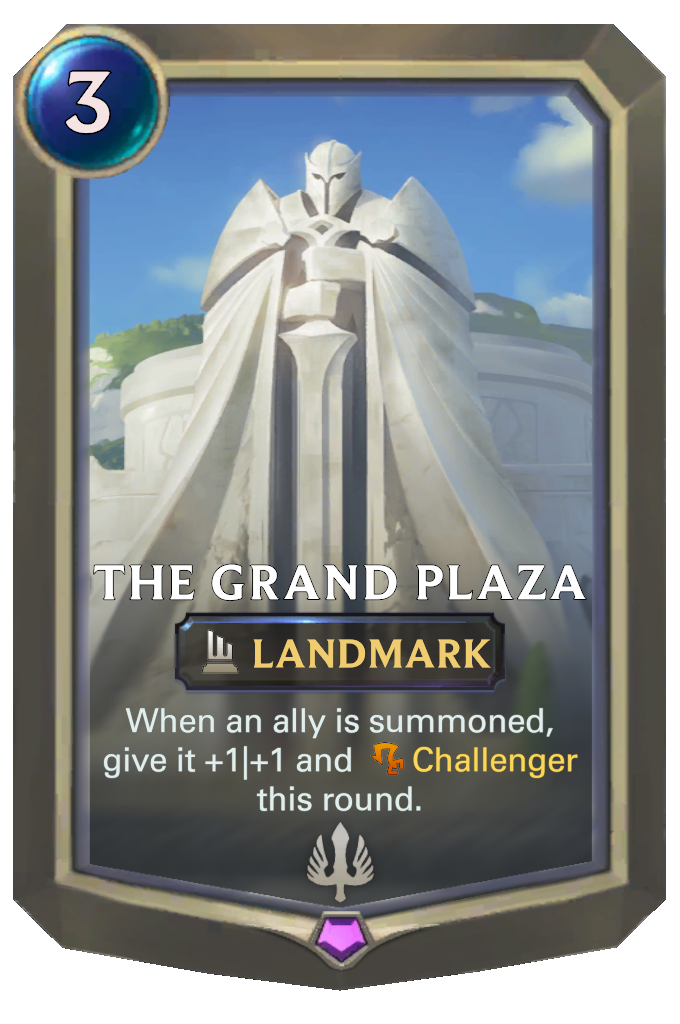
As the most recent card to be released on this list, The Grand Plaza has a ton of ground to cover in terms of leaving an impact on the meta. But due to its power level, the new Landmark has had no issues carving out a spot for itself on the ladder.
With its release in the December expansion, Cosmic Creation, The Grand Plaza has revitalized old builds of Demacian midrange while spawning new archetypes that lean toward token creation. These builds either use Bilgewater for Double Trouble and Island Navigator or Shadow Isles for Onslaught of Shadows and The Undying. But since the card is only a week old, there are still experiments and new decks that can be found for it in the coming months.
While The Grand Plaza’s major weakness is the initial three mana investment, the Demacian Landmark quickly pays for itself thanks to the temporary bonus stats and Challenger it gives to every ally summon. If the user of The Grand Plaza isn’t pressured enough after playing it, opponents may begin to get overrun by the extra power given in combat. Expect to see a lot of The Grand Plaza in 2021 and beyond.
10) Miss Fortune
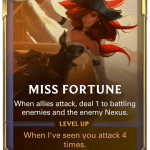
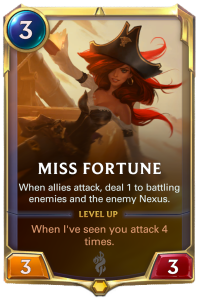
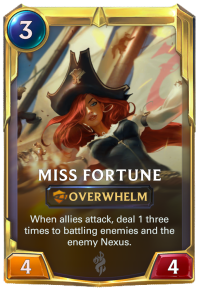
Bilgewater’s identity from the start has been associated with many themes, from Sea Monsters to Plunder and overall aggression. Miss Fortune covers the two latter themes due to her low cost, respectable stat line, and an aggressive effect that deals massive Nexus damage and helps with board control. Miss Fortune has been paramount to aggro and midrange Bilgewater decks since weaker units have the ability to make weaker allies trade up against stronger enemies due to her Love Tap skill.
Miss Fortune’s main power comes from her constant threat of leveling up. Since she needs to be on the board to see four different attack phases, it isn’t likely for her to reach level two in a match. But the strength of her level two form provides a ridiculous amount of damage that not many decks can deal with.
Since Scouts provide multiple attacks, Demacia has been Miss Fortune’s most popular partner region because it activates Rally a ton. The more opportunities Miss Fortune has to witness attacks, the more chances she has to activate her ability.
9) Grizzled Ranger
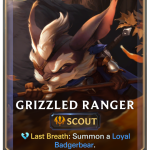
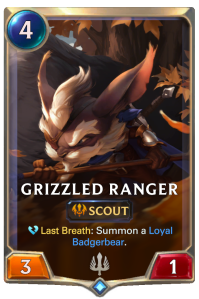
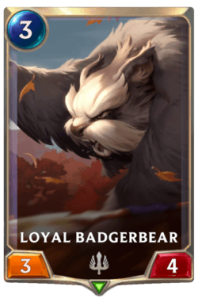
Since his introduction to LoR in Rising Tides, Grizzled Ranger (Bertrand) has been a prominent force on the ladder. Despite being nerfed twice in the first patch after its inclusion in the form of both Grizzled Ranger and Loyal Badgerbear losing one power each, Demacia has always relied on the raw power of the Grizzled Ranger.
Scout is one of the most powerful keywords in LoR because the ability to gain an extra attack yields multiple opportunities. From leveling your Miss Fortune and Quinn quickly to forcing your opponent to take actions before you or even just dealing massive damage, Grizzled Ranger and Scout as a whole will make sure Demacia maintains a healthy spot on the ladder.
8) Sejuani
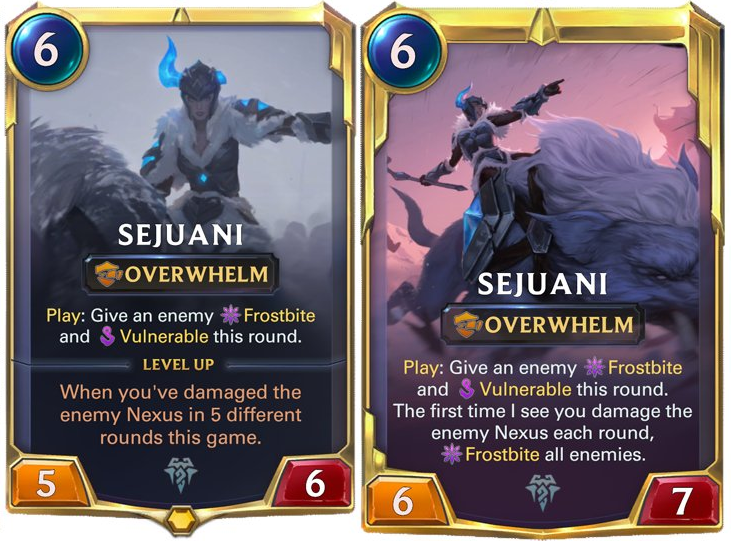
Back in the base set of the game, Noxus Ashe was a potent midrange archetype but lacked a few key tools to be considered the best deck in the game. Once Sejuani was added to the game, though, she became the queen of dominating the board with her presence. Due to her ability to grant Frostbite and Vulnerable keywords to an enemy, this usually leads to the safe destruction of any unit.
If there’s a powerful enemy or one that’s weak in combat but has value, Sejuani usually opens up a pathway to running over it due to her high stats. She can slay a majority of the cards that are played before turn six.
In most of the decks she’s in, Sejuani usually doesn’t aim to level up. But if Sejuani does level up, it usually means game over for any aggressive-based combat deck. The ability to Frostbite an entire enemy board means the opponent will have to sacrifice their units without trading back, which seals the fate for most decks in the meta.
7) Trundle

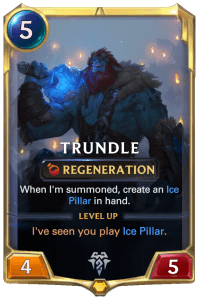
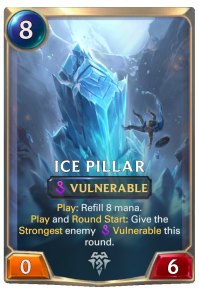
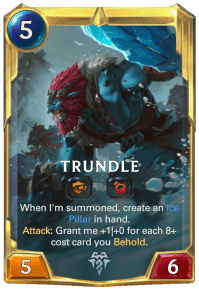
Another card on this list that received nerfs, Trundle is the most recent to see his changes in Patch 1.14. Trundle has been the main bridge for Freljord Ramp decks since his inclusion in Call of the Mountain. As a five-mana card, ramps usually aim to play Trundle as soon as turn four (usually by following a Wyrding Stones or Catalyst of the Ages on turn three). His original stat line also staved off most aggressive and midrange decks due to his six health and regeneration.
With his new nerf to five health, though, Trundle is a bit more vulnerable to removal and combat tricks. He’s still an important key to letting Freljord reach their later turns, though. Once Trundle levels up, he puts opponents on a clock due to his ramping attack, Overwhelm, and the ability to constantly pick off units with the Vulnerable granted from his Ice Pillar.
6) Vi
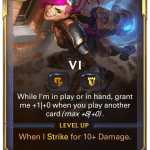
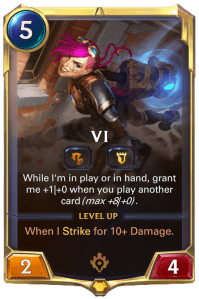
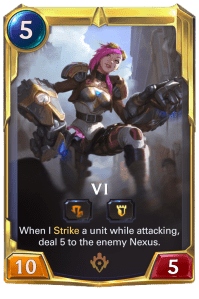
Yet another card that received nerfs, Vi was a powerful midrange force and answer for Piltover. Her original stat line of two power, which can increase for every card played, five health, and Tough allowed her to destroy most units that were played before her. And even after receiving a one health nerf, Vi still managed to find a slot in slower and controlling decks as another answer card.
Vi is usually paired with Heimerdinger since both of them are powerful turn-five plays that serve a dual purpose of either gaining value or answering opposing boards efficiently. Recent Vi lists use Ezreal as a partner champion alongside Go Hard and Shadow Isles.
5) Feel the Rush
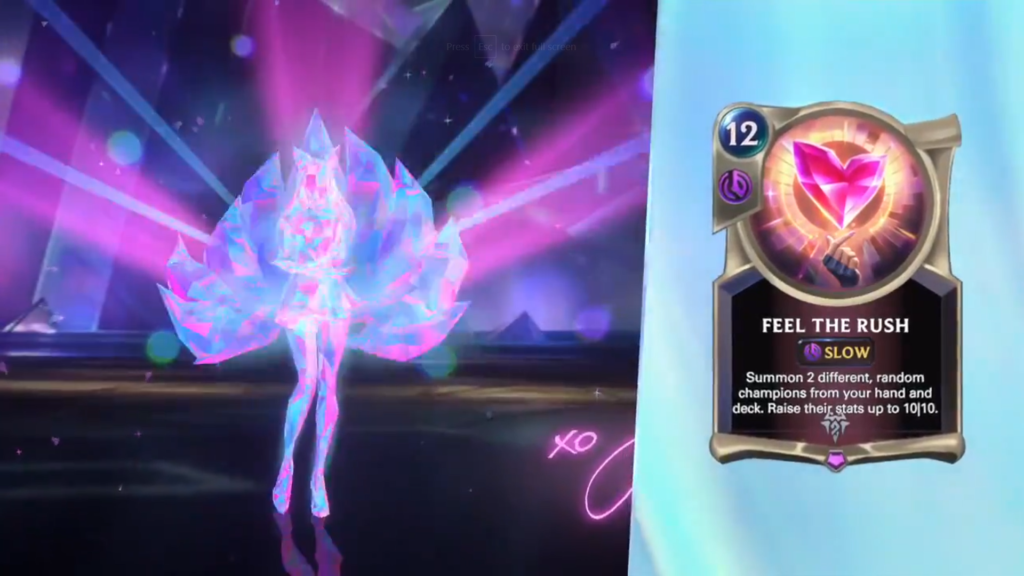
Released as a part of the K/DA and LoR crossover event, Feel the Rush is the second-newest card to make the list. The expensive spell effectively revitalized Freljord Ramp lists and replaced Warmother’s Call as the finisher for all slow Freljord decks.
The ability to cheat out a massive amount of mana worth of champions (usually Trundle and Tryndamere) while boosting their stats to 10/10 usually means the game is over for any opponent within the next couple of turns.
While the most popular and efficient lists sporting Feel the Rush use Trundle and Tryndamere, some control lists can look to use Aurelion Sol as an alternate finisher depending on the meta.
4) Pale Cascade
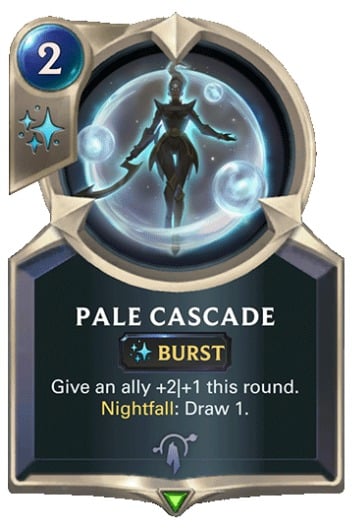
Targon has left an impactful mark on the meta as the newest region added to the game. As a region that introduced multiple keywords but also one that revolves around buffing their units, Pale Cascade encapsulates that power as one of the best combat tricks in the game.
A +2/+1 temporary buff for the round usually gives a unit the power to win most fights and sometimes survive by the skin of their teeth. This alone is an average ability at best. But the strength of Pale Cascade is the ability to cycle itself if it’s not the first card you played within a turn. The main weakness of combat tricks is that they spend your card advantage to try to win exchanges. But if your opponent outplays any given circumstance, you’ll be put at a major disadvantage.
Since Pale Cascade draws a card, it’s hard to be put at a card disadvantage, even if your opponent manages to go even in a trade or win.
3) Deep Meditation
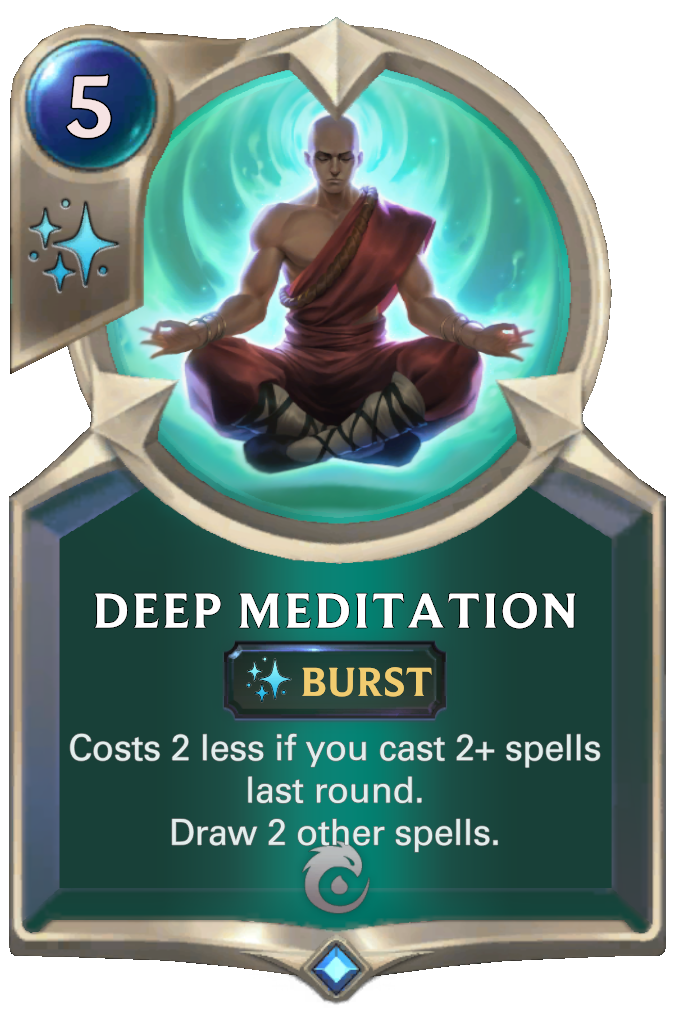
As the last card on this list to initially receive nerfs when first adjusted, Deep Meditation was a powerful card that helped push varying archetypes, mainly spellweaving Ionia and combo decks.
Drawing in LoR is usually either expensive or packed with costly conditions that can lead to problems trying to retain value. Deep Meditation was originally a four-mana tutor that helped get future spells and the ability to discount itself by two if you played multiple spells last turn provided immense value.
Even after being nerfed to five mana, Deep Meditation has been a vital part of Ionia decks that look to find answers to problems as a control list or perform combos against their opponents.
2) Swain

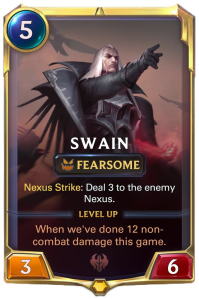
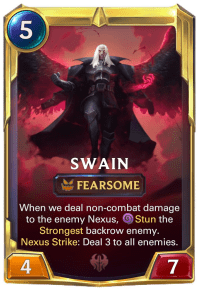
The general of Noxus himself has helped spawn a multitude of midrange decks for the region. While the usual pair for Swain has been Bilgewater, some decks use Piltover and Zaun as an alternate region to help the grand general succeed.
Swain is a potent card with a sizable body for his cost alongside a powerful keyword in Fearsome. Opponents always need to play around an early Swain. Otherwise, they’ll take massive damage.
Once Swain levels up, which isn’t a difficult task, he can break any stall with a proper setup. The Leviathan can help Swain stun three enemies, which will assist in bypassing the opposing board and usually spells game over for any unprepared adversary.
1) Lee Sin
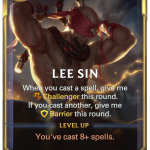
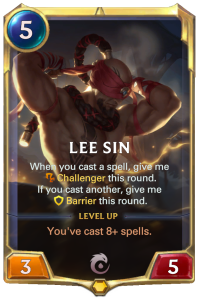
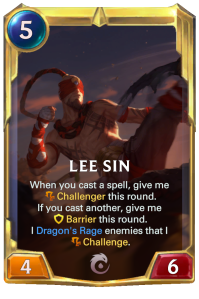
As the sole card on this list to receive buffs, Lee Sin had a rocky start following his initial inclusion in Rising Tides. While he saw limited play and success after his first release, players devoted to him were able to gain wins due to his combo potential.
Once Targon was released in Call of the Mountain, Lee’s play rate steadily rose due to the region’s ease of access in buffing power and granting units Overwhelm. In addition, once Lee Sin received a massive mana cost reduction, his play and win rates skyrocketed to new heights, allowing him to double as a combo card that can quell aggro while one-shotting slower opponents with a kick combo.
While Lee Sin has been nerfed a little bit since this massive buff, he still sees regular play on the ladder. The ladder has been more aggressive lately, which the recently nerfed Lee has a soft weakness to now. But if the meta ever massively trends toward slower decks, expect Lee to be the best at keeping control decks in check.
LoR’s next set will be released in February following the conclusion of the game’s second Seasonal Tournament.



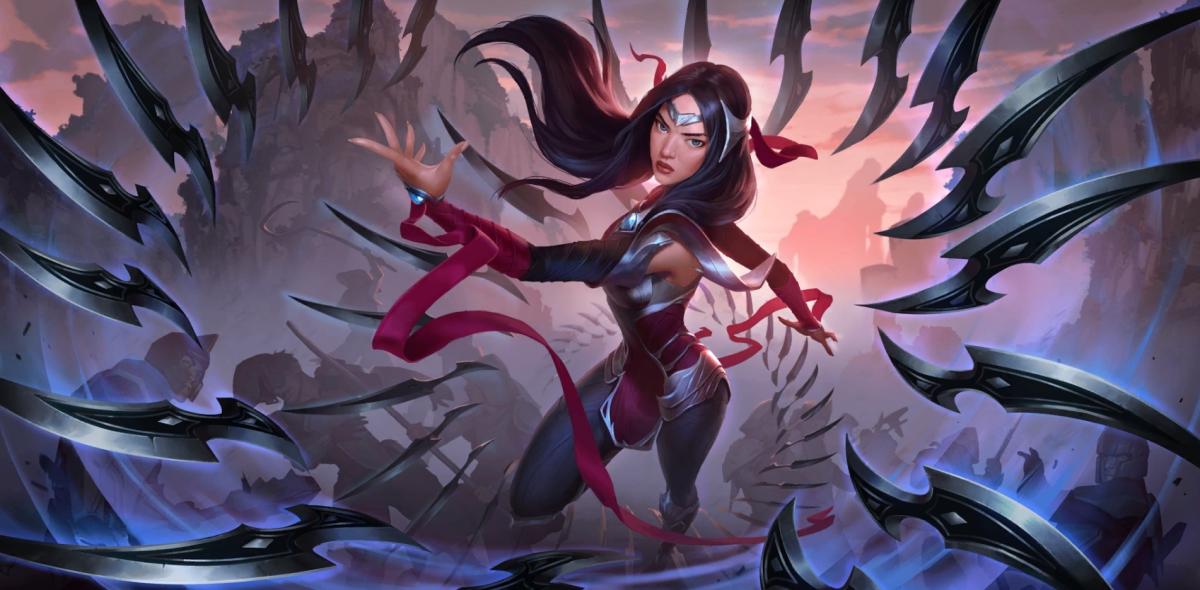
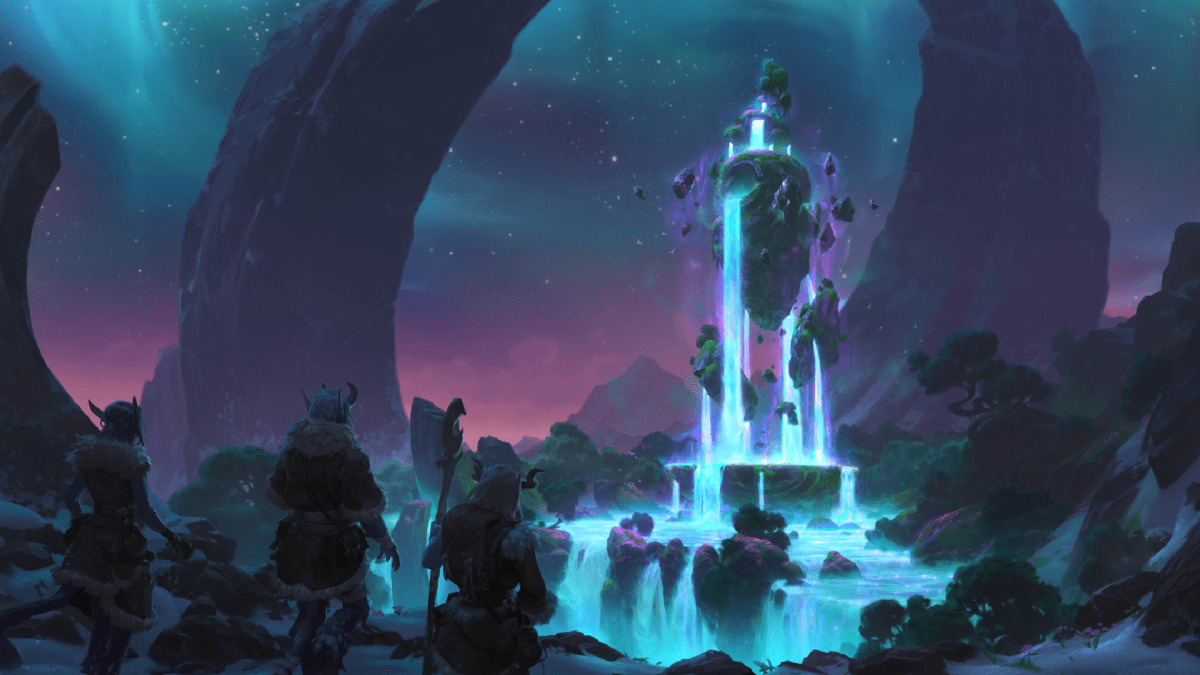
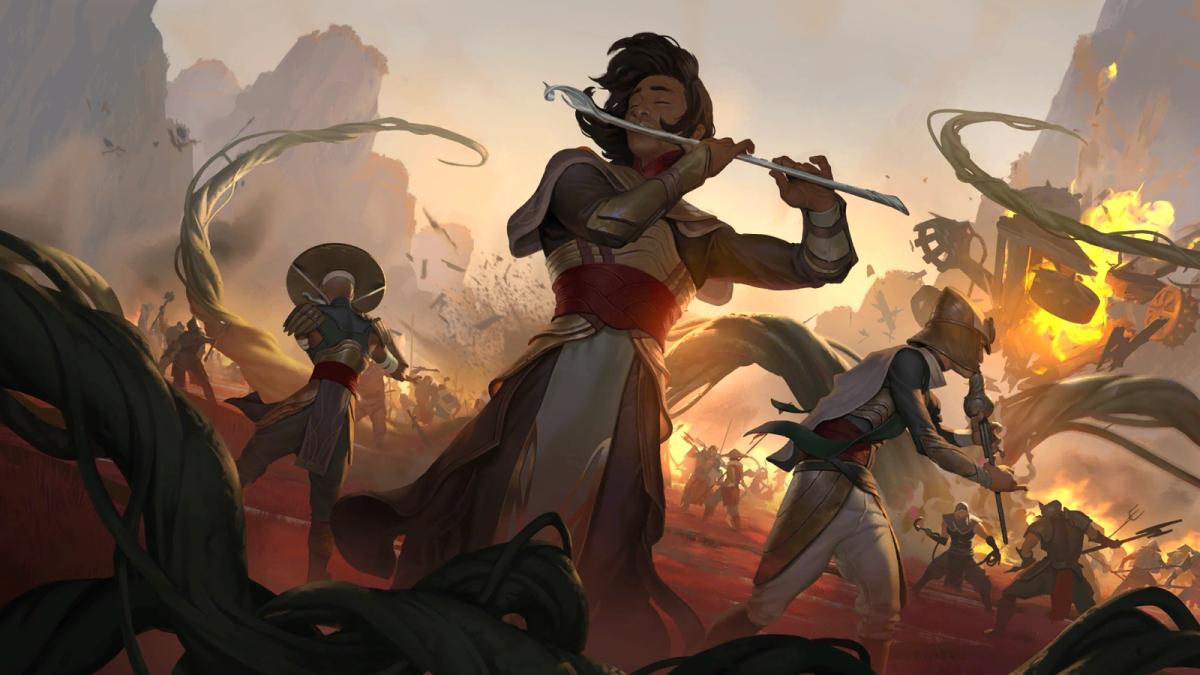
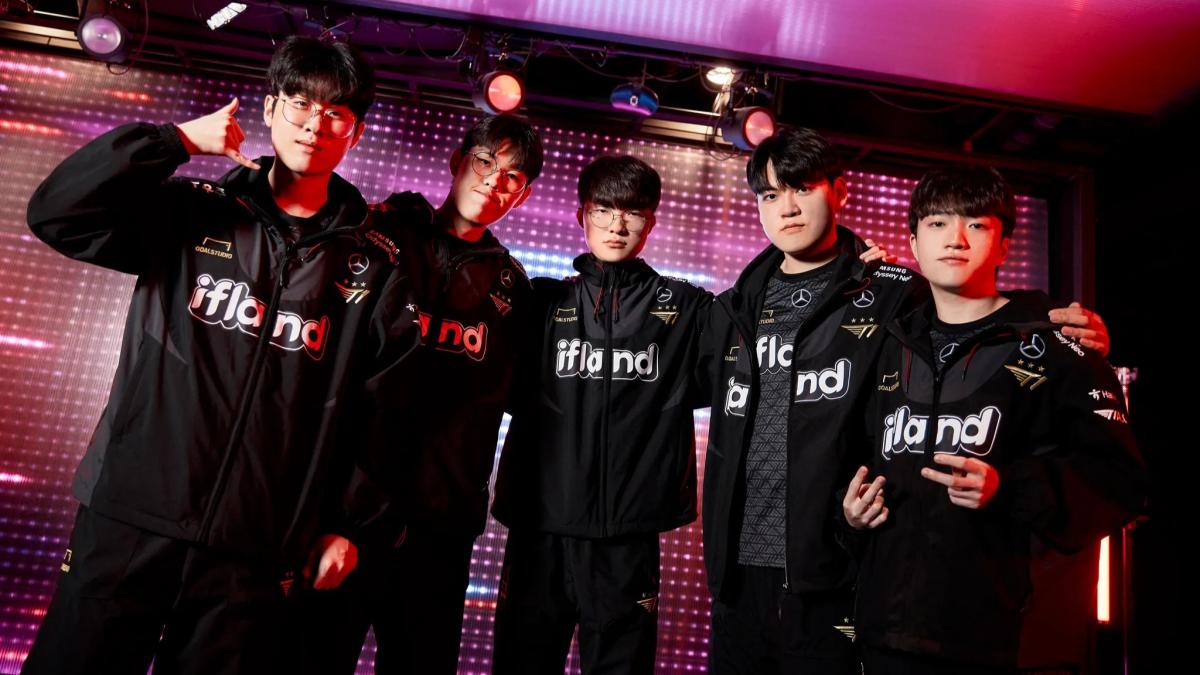

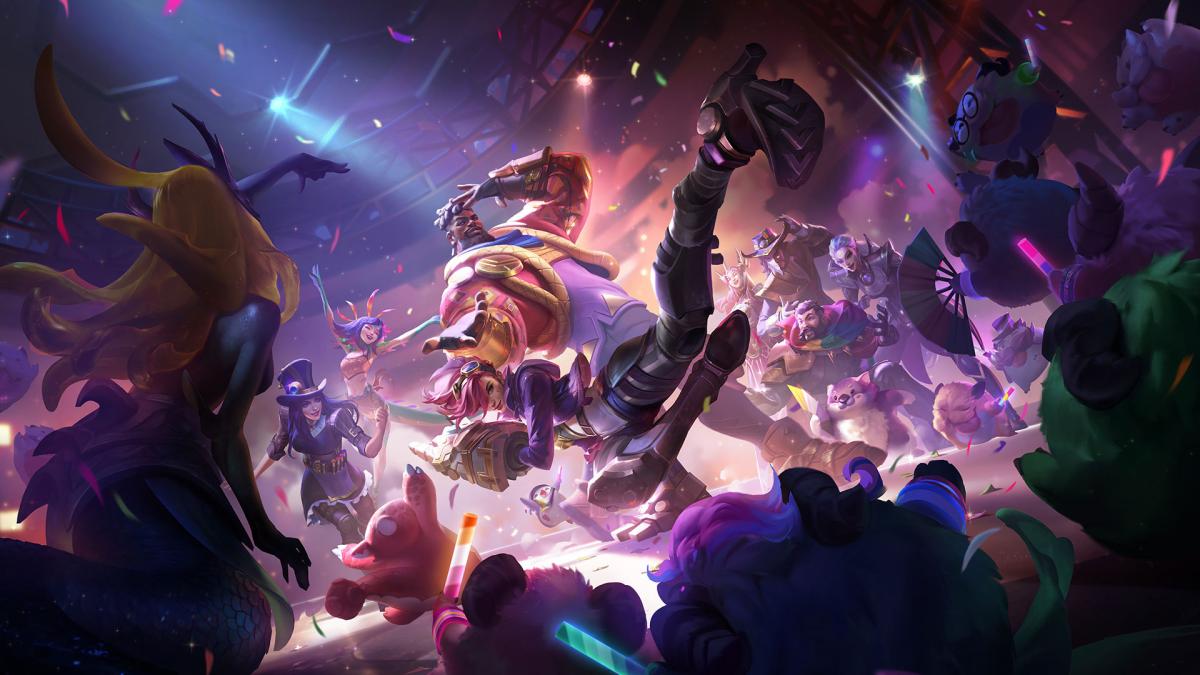
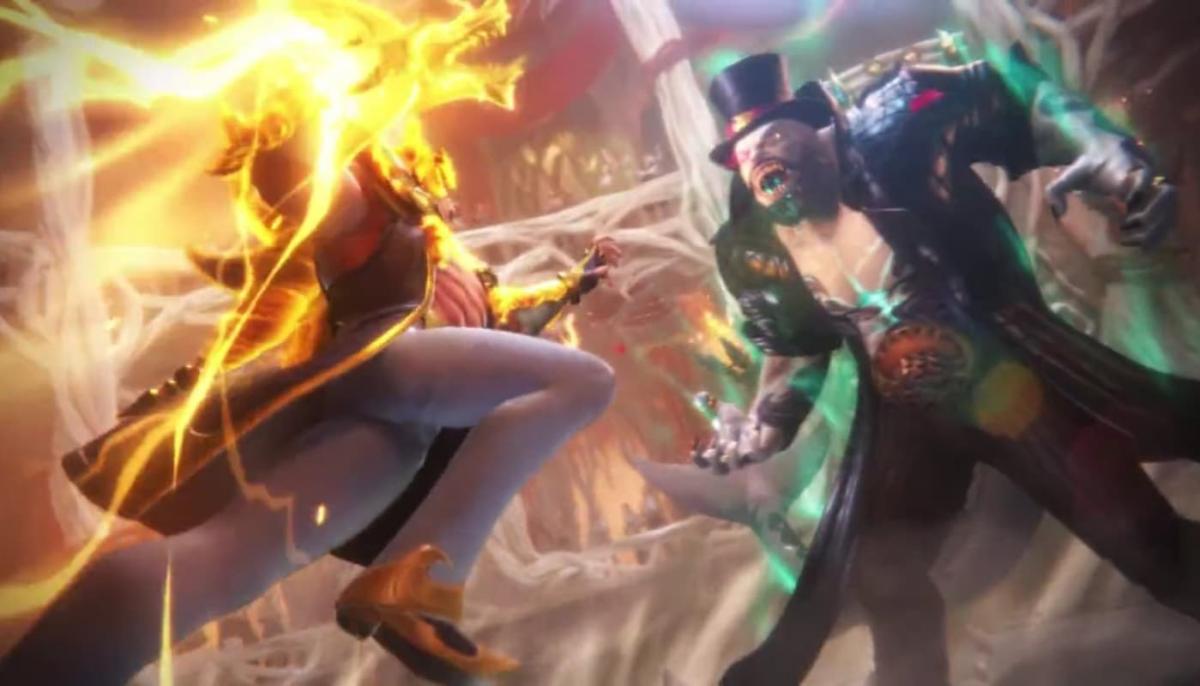
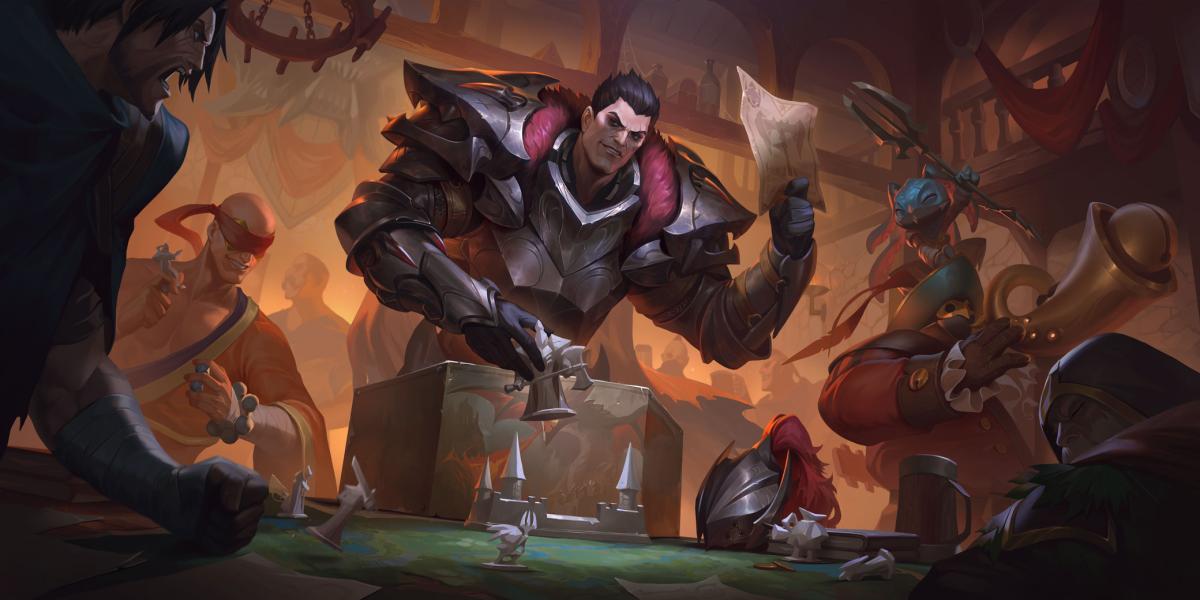


Published: Dec 25, 2020 05:00 pm